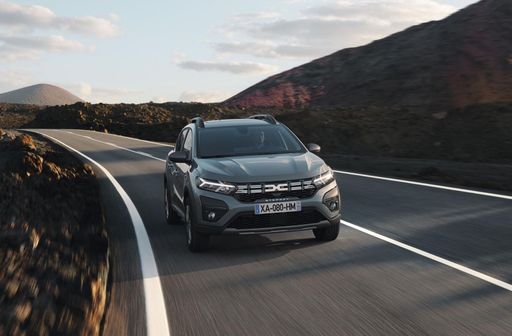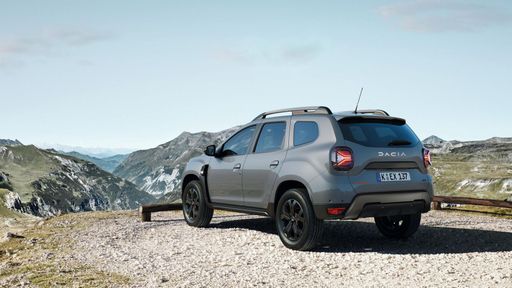Dacia Duster vs Renault Trafic Bus - Differences and prices compared
Costs and Efficiency:
When it comes to price and running costs, the biggest differences usually appear. This is often where you see which car fits your budget better in the long run.
Dacia Duster has a significantly advantage in terms of price – it starts at 16300 £, while the Renault Trafic Bus costs 38200 £. That’s a price difference of around 21962 £.
Fuel consumption also shows a difference: Dacia Duster manages with 4.70 L and is therefore clearly more efficient than the Renault Trafic Bus with 6.70 L. The difference is about 2 L per 100 km.
Engine and Performance:
Power, torque and acceleration are the classic benchmarks for car enthusiasts – and here, some clear differences start to show.
When it comes to engine power, the Renault Trafic Bus has a minimal edge – offering 170 HP compared to 158 HP. That’s roughly 12 HP more horsepower.
In acceleration from 0 to 100 km/h, the Dacia Duster is a bit quicker – completing the sprint in 9.40 s, while the Renault Trafic Bus takes 10.60 s. That’s about 1.20 s faster.
In terms of top speed, the performs better – reaching , while the tops out at . The difference is around .
There’s also a difference in torque: Renault Trafic Bus pulls distinct stronger with 380 Nm compared to 230 Nm. That’s about 150 Nm difference.
Space and Everyday Use:
Beyond pure performance, interior space and usability matter most in daily life. This is where you see which car is more practical and versatile.
Seats: Renault Trafic Bus offers clearly more seating capacity – 9 vs 5.
In curb weight, Dacia Duster is significantly lighter – 1377 kg compared to 2031 kg. The difference is around 654 kg.
In maximum load capacity, the Renault Trafic Bus performs significantly better – up to 4000 L, which is about 2391 L more than the Dacia Duster.
When it comes to payload, Renault Trafic Bus significantly takes the win – 982 kg compared to 453 kg. That’s a difference of about 529 kg.
Who comes out on top?
Overall, the Dacia Duster shows itself to be secures victory with a clear margin and secures the title of DriveDuel Champion.
It convinces with the more balanced overall package and proves to be the more versatile choice for everyday use.
 @ Dacia / Renault Group Media
@ Dacia / Renault Group Media
Dacia Duster
Costs and Consumption
View detailed analysis
Engine and Performance
View detailed analysis
Dimensions and Body
View detailed analysis
Dacia Duster
The Dacia Duster is a no-nonsense compact SUV that delivers rugged practicality and surprisingly comfortable everyday driving without fuss. It might not win any beauty contests, but its honest design, easy-to-live-with cabin and tough attitude make it a smart pick for buyers who want reliable transport without luxury frills.
details @ Dacia / Renault Group Media
@ Dacia / Renault Group Media
 @ Dacia / Renault Group Media
@ Dacia / Renault Group Media
 @ Dacia / Renault Group Media
@ Dacia / Renault Group Media
 @ Dacia / Renault Group Media
@ Dacia / Renault Group Media
Renault Trafic Bus
The Renault Trafic is a practical people-carrier that prefers sensible space and smart flexibility to showroom gloss, making it a top pick for families, shuttle operators or anyone ferrying a crowd without fuss. It’s comfortable, economical in everyday running and blessedly uncomplicated — not the most glamorous vehicle, but brilliantly dependable when you need it to be.
details
 @ Dacia / Renault Group Media
@ Dacia / Renault Group Media
|
|
|
|
|
Costs and Consumption |
|
|---|---|
|
Price
16300 - 24900 £
|
Price
38200 - 54400 £
|
|
Consumption L/100km
4.7 - 7.5 L
|
Consumption L/100km
6.7 - 7.2 L
|
|
Consumption kWh/100km
-
|
Consumption kWh/100km
-
|
|
Electric Range
-
|
Electric Range
-
|
|
Battery Capacity
0.60 kWh
|
Battery Capacity
-
|
|
co2
107 - 124 g/km
|
co2
175 - 189 g/km
|
|
Fuel tank capacity
50 L
|
Fuel tank capacity
80 L
|
Dimensions and Body |
|
|---|---|
|
Body Type
SUV
|
Body Type
Bus
|
|
Seats
5
|
Seats
8 - 9
|
|
Doors
5
|
Doors
4
|
|
Curb weight
1377 - 1455 kg
|
Curb weight
2031 - 2352 kg
|
|
Trunk capacity
348 - 517 L
|
Trunk capacity
-
|
|
Length
4343 mm
|
Length
5080 - 5480 mm
|
|
Width
1813 mm
|
Width
1956 mm
|
|
Height
1656 - 1659 mm
|
Height
1973 - 1974 mm
|
|
Max trunk capacity
1414 - 1609 L
|
Max trunk capacity
3200 - 4000 L
|
|
Payload
450 - 453 kg
|
Payload
718 - 982 kg
|
Engine and Performance |
|
|---|---|
|
Engine Type
Petrol MHEV, Full Hybrid, LPG
|
Engine Type
Diesel
|
|
Transmission
Manuel, Automatic
|
Transmission
Manuel, Automatic
|
|
Transmission Detail
Manual Gearbox, Automated Manual, Dual-Clutch Automatic
|
Transmission Detail
Manual Gearbox, Automatic Gearbox
|
|
Drive Type
Front-Wheel Drive, All-Wheel Drive
|
Drive Type
Front-Wheel Drive
|
|
Power HP
115 - 158 HP
|
Power HP
110 - 170 HP
|
|
Acceleration 0-100km/h
9.4 - 11.6 s
|
Acceleration 0-100km/h
10.6 - 16.5 s
|
|
Max Speed
180 km/h
|
Max Speed
161 - 180 km/h
|
|
Torque
190 - 230 Nm
|
Torque
300 - 380 Nm
|
|
Number of Cylinders
3 - 4
|
Number of Cylinders
4
|
|
Power kW
84 - 116 kW
|
Power kW
81 - 125 kW
|
|
Engine capacity
1199 - 1789 cm3
|
Engine capacity
1997 cm3
|
General |
|
|---|---|
|
Model Year
2025
|
Model Year
2023 - 2025
|
|
CO2 Efficiency Class
D, C
|
CO2 Efficiency Class
G, F
|
|
Brand
Dacia
|
Brand
Renault
|
What drivetrain options does the Dacia Duster have?
The Dacia Duster is offered with Front-Wheel Drive or All-Wheel Drive.
The prices and data displayed are estimates based on German list prices and may vary by country. This information is not legally binding.
